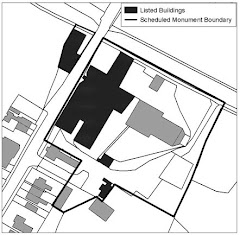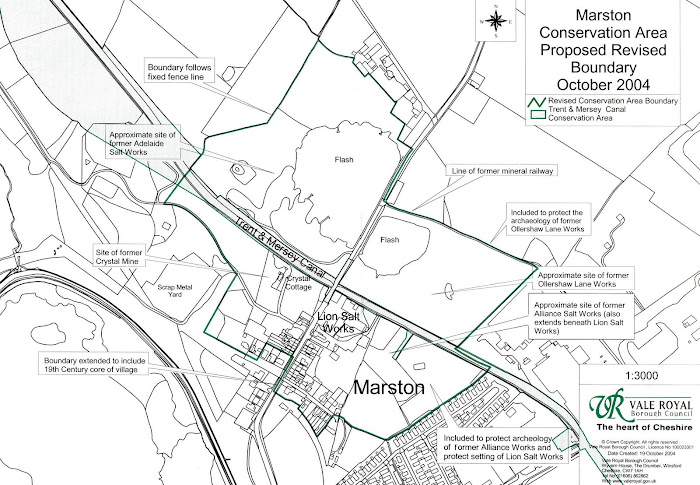 All the steel girders were inserted beneath Pan 5 by mid morning today. These now need to have packing inserted between the top of the girders and the underside of the pan so that the pan is fully supported when it is lifted and moved.
All the steel girders were inserted beneath Pan 5 by mid morning today. These now need to have packing inserted between the top of the girders and the underside of the pan so that the pan is fully supported when it is lifted and moved. The lifting beams will be bolted together tomorrow ready for the lift to take place early next week.
Preparatory work was completed for a final piece of laser scanning to capture data within the drying area of the earliest building on site. This is the remains of Warehouse and Stove Ho use 1, built in the 1890's but heavily altered as other salt houses were added. The structure was heavily cut away as Stove House 2 and 3 were added to its north and south elevations.
use 1, built in the 1890's but heavily altered as other salt houses were added. The structure was heavily cut away as Stove House 2 and 3 were added to its north and south elevations. 
The brick flues have been robbed out, cast iron column which should support the floor above have been lost, corroded away or have collapsed and half the roof had fallen in allowing the weather to decay a lot of the floor boards. having said all that the roof trusses are in good condition and can be incorporated into the restoration works of Phase 2. This area gives you that 'stepping back in time' feeling as you absorb the atmosphere of standing inside a Victorian salt works, and you can see how the stove house we are currently dismantling has been built in the same traditional way, to the same design - to do the same job of evaporating brine and making white salt crystals.
 use 1, built in the 1890's but heavily altered as other salt houses were added. The structure was heavily cut away as Stove House 2 and 3 were added to its north and south elevations.
use 1, built in the 1890's but heavily altered as other salt houses were added. The structure was heavily cut away as Stove House 2 and 3 were added to its north and south elevations. 
The brick flues have been robbed out, cast iron column which should support the floor above have been lost, corroded away or have collapsed and half the roof had fallen in allowing the weather to decay a lot of the floor boards. having said all that the roof trusses are in good condition and can be incorporated into the restoration works of Phase 2. This area gives you that 'stepping back in time' feeling as you absorb the atmosphere of standing inside a Victorian salt works, and you can see how the stove house we are currently dismantling has been built in the same traditional way, to the same design - to do the same job of evaporating brine and making white salt crystals.
Some of the trusses have carpenters marks. This one is numbered 'I I' for the second truss - but is in the middle of the roof structure. So, either the frames were put up out of sequence, or the frames might have been recycled from an earlier building. Other trusses are numbered 'V' and IV'. Where a brace has been
 inserted a small cross '+' has been cut unto the upright beam to indicate where it was to be positioned.
inserted a small cross '+' has been cut unto the upright beam to indicate where it was to be positioned.
 inserted a small cross '+' has been cut unto the upright beam to indicate where it was to be positioned.
inserted a small cross '+' has been cut unto the upright beam to indicate where it was to be positioned.The end gable, which will be dismantled as part of our Enabling Works, has remains of lime wash on the inner surface. All the brickwork and timbers were lime washed to protect them from the salt and stop loose flakes of brick or timber from contaminating the stock piles.
 Ironwork has not survived well, particularly in areas which have been damp, or wet from ingress of rain. However in this area one hatch cover still survives with its original iron ring.
Ironwork has not survived well, particularly in areas which have been damp, or wet from ingress of rain. However in this area one hatch cover still survives with its original iron ring.






No comments:
Post a Comment
Please leave your cmments about the work to restore the Lion Salt Works.